
USS United States was a wooden-hulled, three-masted heavy frigate of the United States Navy and the first of the six original frigates authorized for construction by the Naval Act of 1794. The name "United States" was among ten names submitted to President George Washington by Secretary of War Timothy Pickering in March of 1795 for the frigates that were to be constructed. Joshua Humphreys designed the frigates to be the young Navy's capital ships, and so United States and her sisters were larger and more heavily armed and built than typical frigates of the period. She was built at Humphrey's shipyard in Philadelphia, Pennsylvania and launched on 10 May 1797 and immediately began duties with the newly formed United States Navy protecting American merchant shipping during the Quasi-War with France.

John Shaw was an Irish-born American officer in the United States Navy.
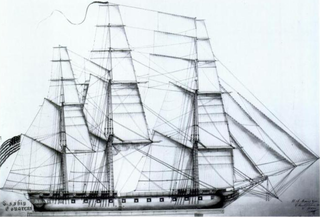
USS Congress was a nominally rated 38-gun wooden-hulled, three-masted heavy frigate of the United States Navy. James Hackett built her at the Portsmouth Naval Shipyard and she was launched on 15 August 1799. She was one of the original six frigates whose construction the Naval Act of 1794 had authorized. The name "Congress" was among ten names submitted to President George Washington by Secretary of War Timothy Pickering in March 1795 for the frigates that were to be constructed.Joshua Humphreys designed these frigates to be the young Navy's capital ships, and so Congress and her sisters were larger and more heavily armed and built than the standard frigates of the period.

Isaac Hull was a Commodore in the United States Navy. He commanded several famous U.S. naval warships including USS Constitution and saw service in the undeclared naval Quasi War with the revolutionary French Republic (France) 1796–1800; the Barbary Wars, with the Barbary states in North Africa; and the War of 1812 (1812–1815), for the second time with Great Britain. In the latter part of his career he was Commandant of the Washington Navy Yard in the national capital of Washington, D.C., and later the Commodore of the Mediterranean Squadron. For the infant U.S. Navy, the battle of USS Constitution vs HMS Guerriere on August 19, 1812, at the beginning of the war, was the most important single ship action of the War of 1812 and one that made Isaac Hull a national hero.

Master Commandant William Henry Allen was an American naval officer during the War of 1812.

David Porter was an officer in the United States Navy in the rank of captain and the honorary title of commodore. Porter commanded a number of U.S. naval ships. He saw service in the First Barbary War, the War of 1812 and in the West Indies. On July 2, 1812, Porter hoisted the banner "Free trade and sailors' rights" as captain of USS Essex. The phrase resonated with many Americans. Porter was later court martialed; he resigned and then joined and became commander-in-chief of the Mexican Navy. Porter County, Indiana was named after him.

Commodore John Rodgers was a United States Navy officer who served during the Navy's formative years from the 1790s through to the late 1830s. He served under six presidents and for nearly four decades. His service took him through numerous military engagements of the Quasi-War, both Barbary Wars, and the War of 1812.

Chesapeake was a 38-gun wooden-hulled, three-masted heavy frigate of the United States Navy. She was one of the original six frigates whose construction was authorized by the Naval Act of 1794. Joshua Humphreys designed these frigates to be the young navy's capital ships. Chesapeake was originally designed as a 44-gun frigate, but construction delays, material shortages and budget problems caused builder Josiah Fox to alter his design to 38 guns. Launched at the Gosport Navy Yard on 2 December 1799, Chesapeake began her career during the Quasi-War with France and later saw service in the First Barbary War.
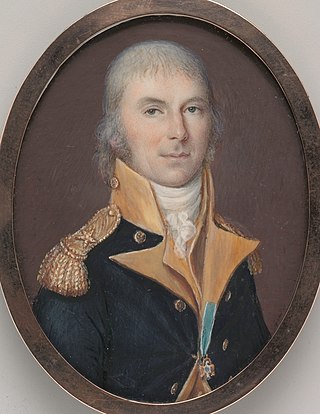
Commodore Alexander Murray was an officer who served in the Continental Navy, the Continental Army, and later the United States Navy, during the American Revolutionary War, the Quasi-War with France and the First Barbary War in North Africa.
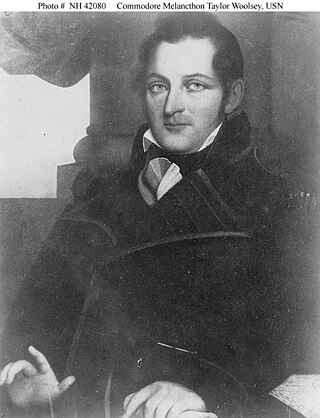
Melancthon Taylor Woolsey was an officer in the United States Navy during the War of 1812 and battles on the Great Lakes. He supervised warship construction at Navy Point in Sackets Harbor, New York, and later had a full career in the Navy.

James Lawrence was an officer of the United States Navy. During the War of 1812, he commanded USS Chesapeake in a single-ship action against HMS Shannon, commanded by Philip Broke. He is probably best known today for his last words, "Don't give up the ship!", uttered during the capture of the Chesapeake. The quotation is still a popular naval battle cry, and was invoked in Oliver Hazard Perry's personal battle flag, adopted to commemorate his dead friend.
Born James William Doughty also known as William Doughty and James Doughty was a United States naval architect who designed many of the sailing "Seventy-four ships". Doughty worked for many years as a United States naval architect laying down such ships "as the USS Delaware, USS Ohio, and USS Carolina that rank with the best ships ever built."
Joseph Tarbell was an officer in the United States Navy during the First Barbary War and the War of 1812.

Daniel Todd Patterson was a United States Navy officer who served during the Quasi-War, First Barbary War, and War of 1812.
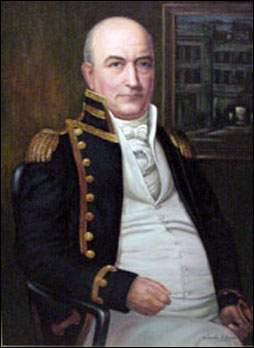
Thomas Tingey was a commodore of the United States Navy. Originally serving in the British Royal Navy, Tingey later served in the Continental Navy. Tingey served with distinction during the Quasi-War and served as the commandant of the navy yard until his death.
Commodore John Thomas Newton was an officer in the United States Navy who commanded several ships over a period of decades, undertaking missions in the Caribbean and leading the first crossing of the Atlantic by an American steam-powered warship. He was court-martialed following a fire that destroyed that vessel, but his suspension from service was remitted by President John Tyler, after which Newton commanded Pensacola Navy Yard and the Home Squadron for periods. He died while serving in his last post as president of a Naval Court of Inquiry.
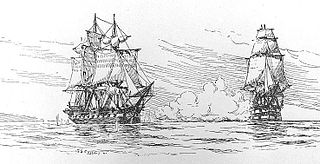
The Chesapeake–Leopard affair was a naval engagement off the coast of Norfolk, Virginia, on June 22, 1807, between the British fourth-rate HMS Leopard and the American frigate USS Chesapeake. The crew of Leopard pursued, attacked, and boarded the American frigate, looking for deserters from the Royal Navy. Chesapeake was caught unprepared and after a short battle involving broadsides received from Leopard, the commander of Chesapeake, James Barron, surrendered his vessel to the British. Chesapeake had fired only one shot.
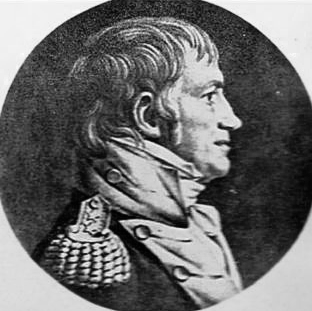
Captain John Smith was a United States Navy officer, who served during the First Barbary War and later in the War of 1812. He commanded USS Vixen, USS Syren, USS Wasp, USS Essex, USS Congress, and USS Franklin.
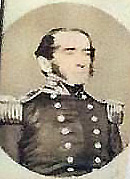
Commodore William J. McCluney was a United States Navy officer whose service included the War of 1812, the Mexican-American War, and the Battle of Ty-ho Bay, China. McCluney commanded two of the flagships—the USS Mississippi and the USS Powhatan—in support of the Perry Expedition to Japan in 1853-1854. As a flag officer, McCluney transported the first Japanese Embassy to the United States aboard his flagship, the USS Roanoke, in 1860 on the last leg of their journey.

















